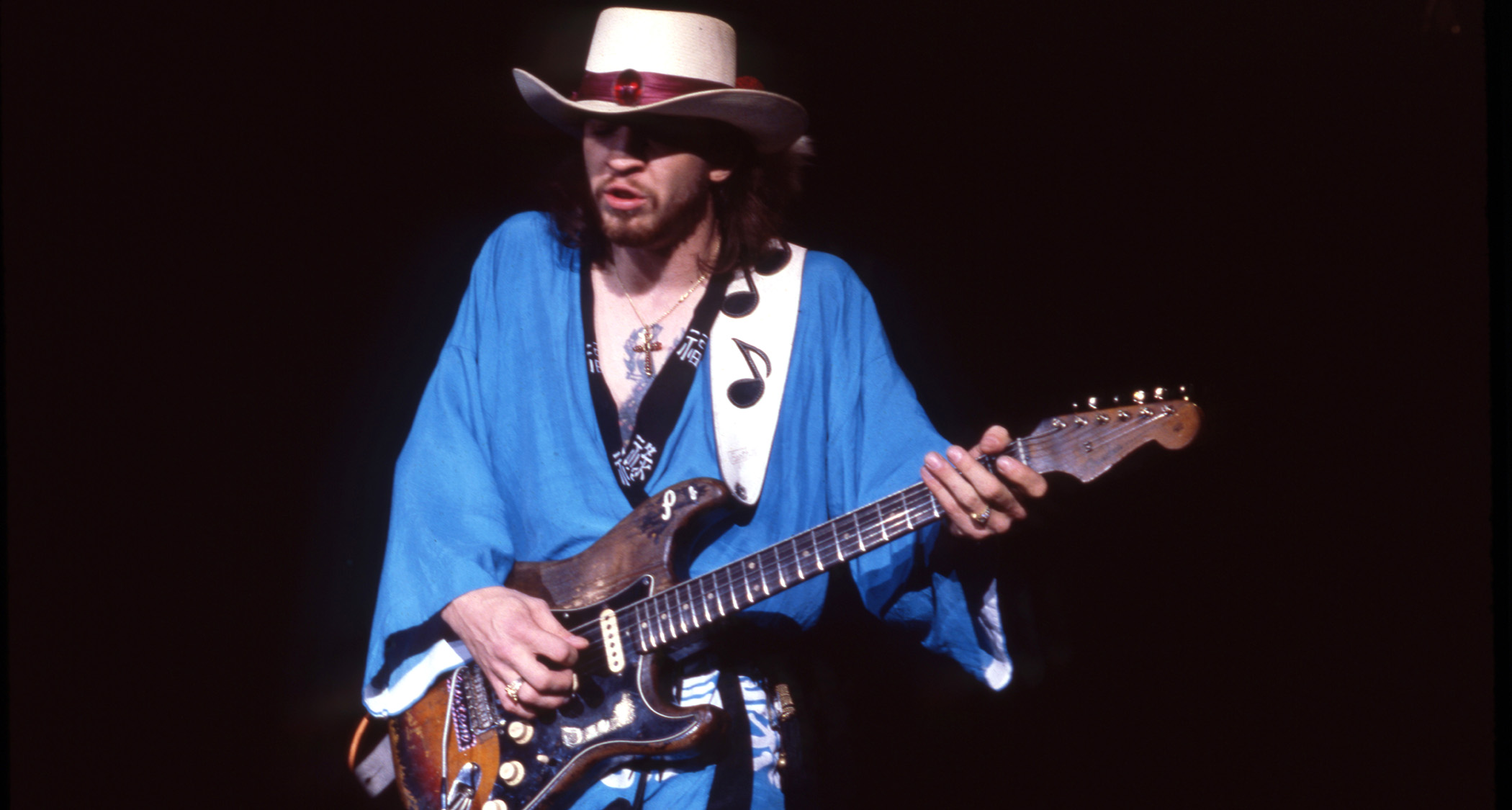You’re not ready for these Teles: meet the rarest Fender Telecasters ever built
From early prototypes to crushed-glass finishes and body contour experiments, these four unicorns tell the story of the Telecaster – and the evolution of the electric guitar itself
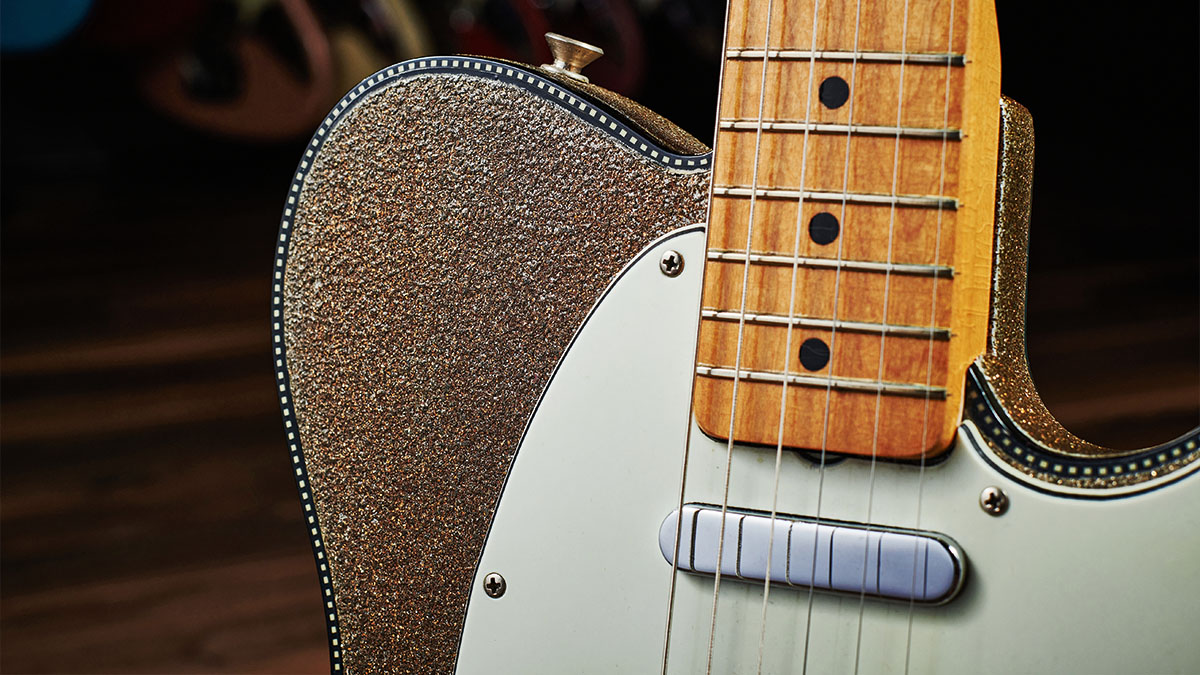
Ask a guitarist what electric they’d choose if they could only have one guitar to cover all gigs and there’s a fair chance that they’ll say ‘Telecaster’. It’s ironic that the simplest of Leo Fender’s solidbody electrics has also proven to be the most adaptable.
Though if we trace its evolution back a little further to the Broadcaster and Esquire that preceded it, we discover that it became simple by design – because in some ways the earliest prototype guitars were more complex than the classic Tele we know today.
The Tele began life as an entirely new kind of guitar, built for the working musician of the jet-age. But as the ’50s progressed, it embedded itself in the musical life of America and the Telecaster became something more meaningful – it was the kind of guitar that went places and got heard at country fairs and city bars alike, a clear-voiced presence in the collective memory of a generation.
Thus Telecasters became truly a guitar of the working musician. And when those musicians passed on, their families often kept their guitars and, with time, those instruments and the stories behind them proved to be more remarkable than anyone had guessed.
Regular readers will already be familiar with the treasure-house of guitar heritage that is Well Strung Guitars of Farmingdale, New York. Now, as we celebrate the musical legacy of the Telecaster, we return there to examine four guitars and the human stories – and occasional unsolved mystery – behind the most enduring electric of all.
Our guide is veteran guitar trader David Davidson, who recounts how Tele history is also our history – the story of music-makers, innovators and six-string dreams made real…
Fender ‘Lamp Switch’ Esquire prototype c.1949
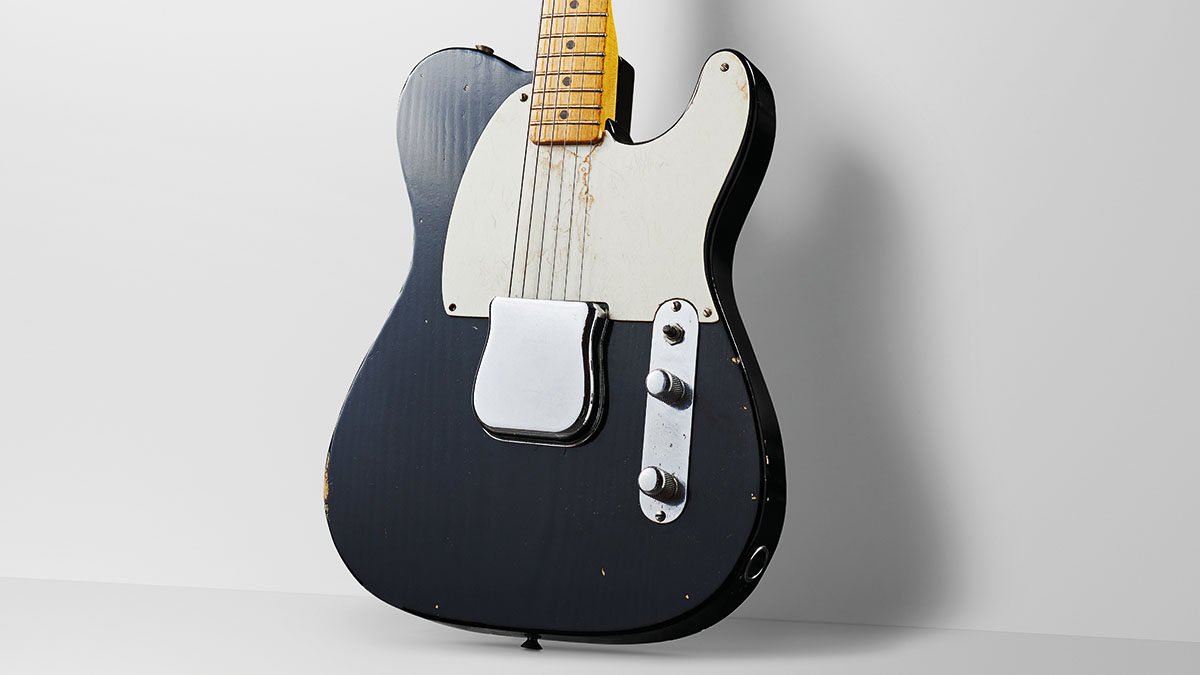
Sometimes the least obtrusive guitars hold the richest history. And, at first glance, it might only be an odd detail or two that tips off their importance to the casual observer. Such is the case with a Black Esquire that resides at Well Strung Guitars, which features an unusual pickup-selector switch borrowed from a desk lamp.
All the latest guitar news, interviews, lessons, reviews, deals and more, direct to your inbox!
The fact it lacks what we would recognise today as a ‘proper’ three-way switch is a telltale sign that this is a very early prototype of the Esquire, which appeared in the earliest Fender brochure promoting Leo Fender’s revolutionary new solidbody design. David Davidson picks up the story.
“I was very fortunate to get that guitar,” David recalls. “I had known about it because the original owner’s son contacted me about the guitar. The original owner had worked for Fender and was gifted this guitar – they basically told him to take it home. So it was never purchased. And they had the guitar in the family until they felt that the time was right to sell it. It took maybe three years for me to buy it. I had been back and forth dozens of times in email or phone communications until I was able to finally meet with the seller.
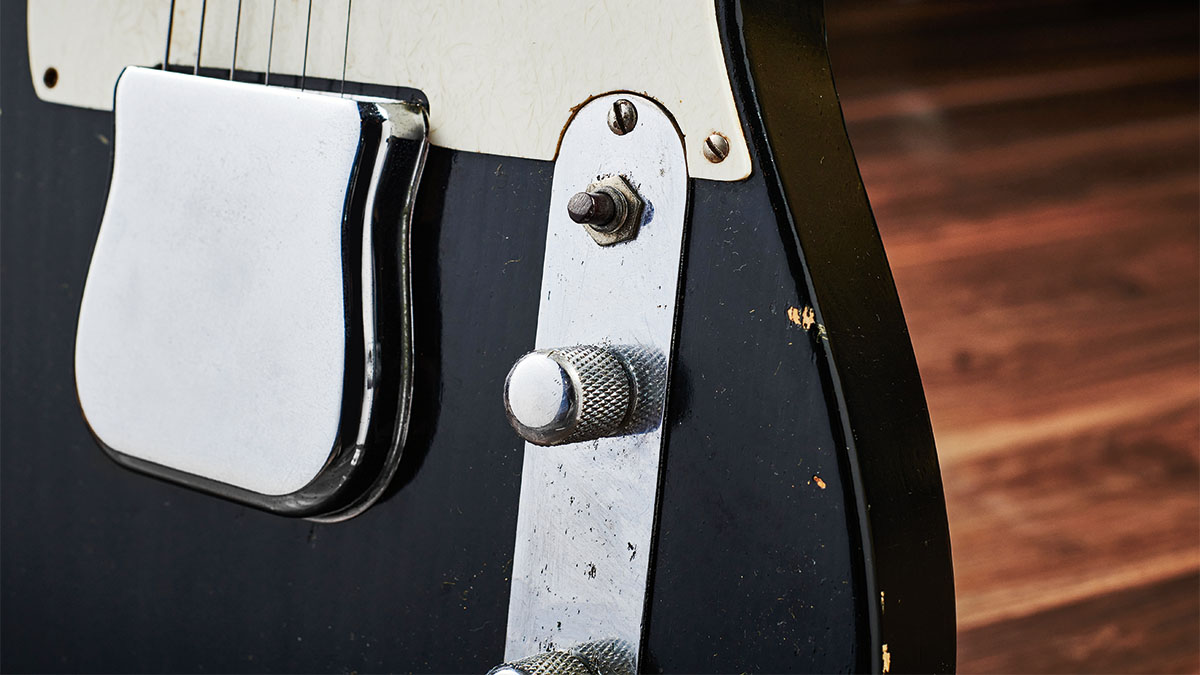
“Basically, I was going out to California for the NAMM Show several years ago, I think it was maybe 2017, and I said, ‘Listen, I’m going to be in California…’ So I sent him and his wife a ticket and they came down and met me in my hotel. When I saw the case, I kind of flipped out a little bit, because it was a rare tweed ‘thermometer’ case [used for very early Fenders] and this one was pretty new, condition-wise.
“Prior to meeting me, we did all of this back-and-forth without me ever really seeing a clear picture of the guitar – I had one black-and-white out-of-focus kind of picture of it that was sent early on… But when I saw the case I thought, ‘Wow, this could be pretty amazing.’
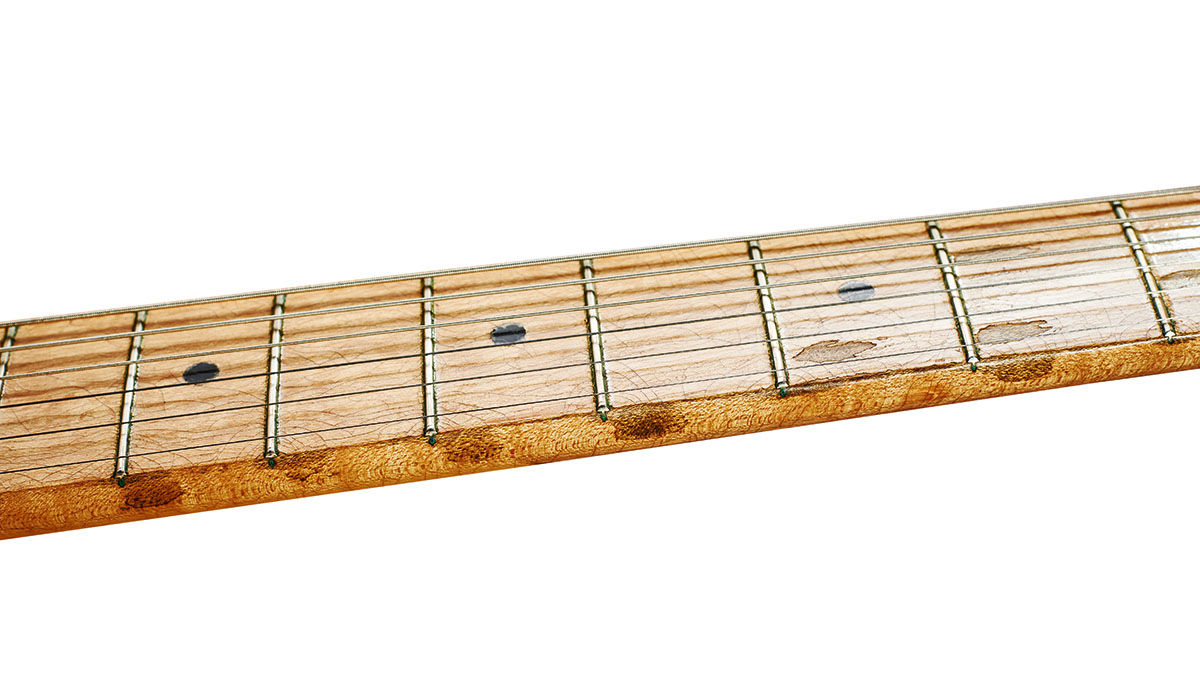
“When I saw the guitar it didn’t occur to me, at first, that this was the actual guitar that Leo Fender photographed with his own camera for the 1950 brochure. And the reason why it took me a little bit to figure it out was that, in the brochure, the word ‘Fender’ was added on the headstock later.
“It was a studio trick – there was never a decal on the guitar itself. So in the original brochure, they had [overlaid] an artist’s rendering of the word Fender on the headstock – too large – whereas the actual guitar has no logo at all.”
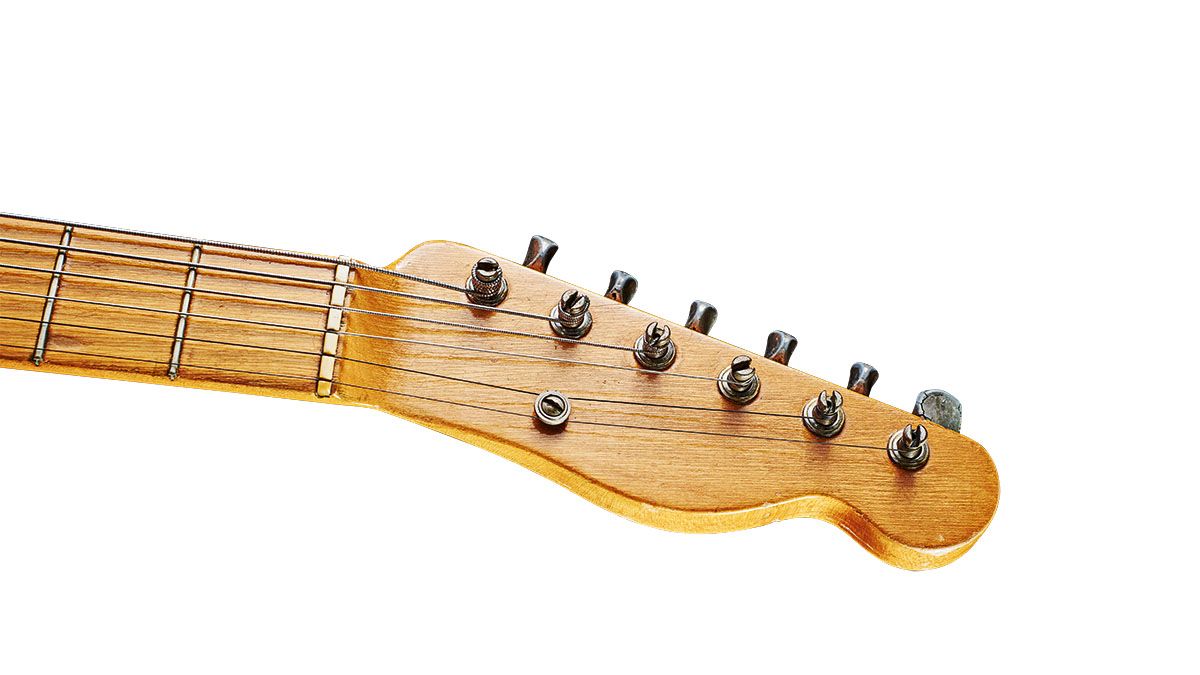
While it took further cross-checks to determine the guitar was the same one Leo photographed for the 1950 brochure, even at first inspection it was clear the instrument was very early and a prototype.
“When I opened it, I was able to look at a lot of the DNA – early Fender stuff, the bridge looked hand-tooled, like it had been bent over an anvil and pounded out with a hammer. Also the pots were so early, 1949, and the lamp button was literally something you might have picked up at a hardware store. The control cavity is actually shorter than a standard production Telecaster. Because it doesn’t have the three-way switch, they were able to actually make it smaller… And then obviously there’s no neck date, which would be consistent with that time period.”
David adds that prototype Esquires and Broadcasters show evidence that Leo considered multiple-piece bodies for both models, though he later simplified this vision.
‘The guitar also had a ‘pancake’ body, which they were using for almost all test mules of that time,” David explains. “I also have the Broadcaster 0009 [prototype] here at Well Strung Guitars, and that also features a pancake body, but that one is pine whereas the black guitar is actually an ash body. So I think it’s eight separate pieces of wood that are joined together to form it. It’s pretty cool.”
An obvious question is where this particular instrument stands in the series of known prototypes that Leo built before going into production with the Esquires and Broadcasters we recognise today. The Esquire’s unique features help place it within a rough chronology, David says.
“I would say this could be either number two or number three along the line,” David argues. “Obviously, the ‘Snakehead’ is the first guitar. And I’ve had a pine body Esquire at one time, which is owned now by a famous celebrity, which had a control panel that is perpendicular to the body and made in the Precision Bass style, with the kind of sharp-angled control plate and no [pickup selector] switch; it just had a volume and a tone.
“And then, after that, this is – I think – the third. Because after this one all the routs for the control plate go to full size, even our 0009 Broadcaster has a full size rout. So I’d say that this is probably the third experimental piece.”
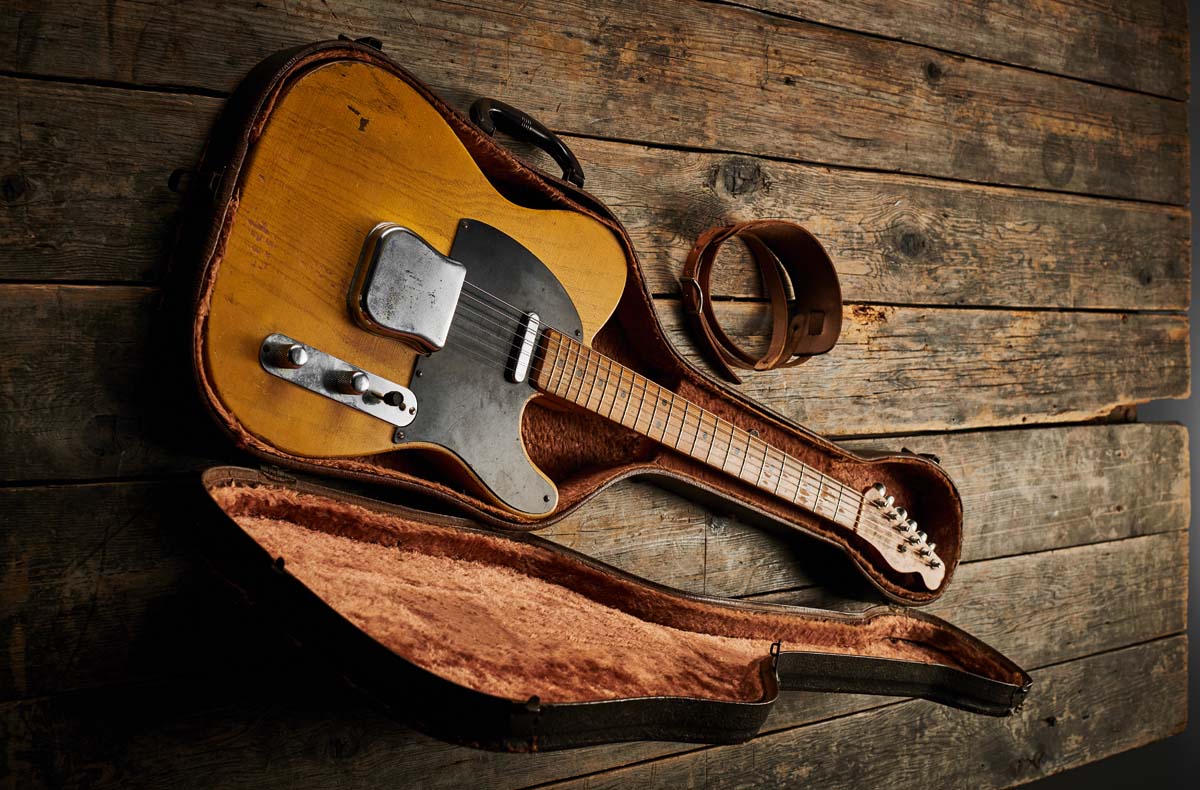
David adds that prototype guitars of this kind often featured materials and parts cannibalised from other industries due to the provisional nature of their early design.
“One extra other thing is that it has a ‘lunch tray’ pickguard. They had the shape in mind of what they wanted for a pickguard. But they didn’t know exactly what they were going to use for material. So this guitar and the 0009 Broadcaster both feature what are known as ‘lunch tray’ pickguards, meaning they were cut out of the bottom of fibreglass cafeteria trays.
“The pickguards are [attached] with four screws on both this guitar and on the 0009 Broadcaster, but this guitar would be the first one that has a traditional Esquire/Tele-shaped pickguard. The two prior [prototypes] have smaller pickguards that only cover the treble side of the guitar, as you’ll see on the ‘Snakehead’. So I feel that this guitar is probably the first guitar to feature a full-sized pickguard, just with one less screw. It’s a pretty amazing piece.”
1958 ‘Contour’ Telecaster
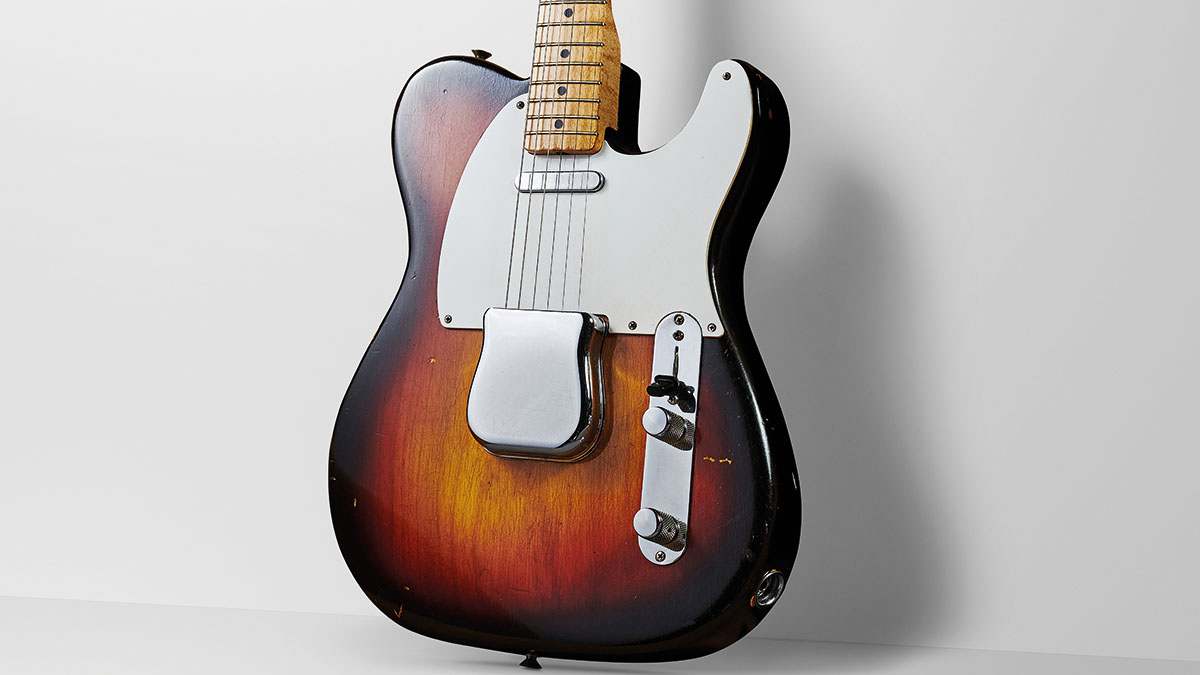
Just as the ‘Lamp Switch’ Esquire prototype lay hidden from view for many decades, so have other unique Telecasters of historic significance. But sometimes the guitar itself – no matter how rare – is less striking than the human story connected to it.
Such was the case with a unique three-colour sunburst 1958 Telecaster and its left-handed companion that both reside at Well Strung Guitars. While highly rare itself, the left-hander is less remarkable than the other guitar, which features factory-fitted forearm and belly carves, like a Strat.
David explains that the story of this unique guitar could be traced back to a minor incident at Fender in the late ’50s when George Fullerton was called upon to settle a kerfuffle caused by two visiting musicians. Little did David know that the story would eventually pull him into its orbit, many years later.
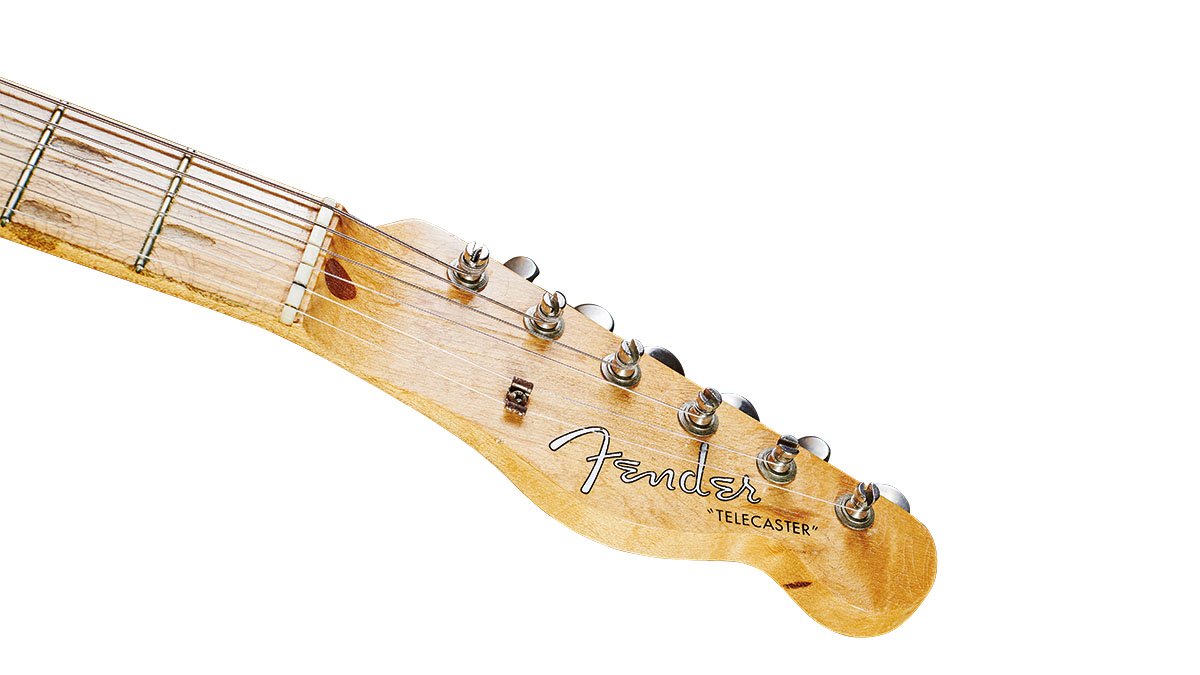
“Those guitars belonged to two sisters – they were called the Friedlich sisters and they had a musical singing group called the Tweedle Dees,” David recalls. “Esther Friedlich was the left-handed twin and, eventually, I bought the left-handed Tele from her hands.
“Meanwhile, her sister, Bertha, was a heavyset girl. And they went to visit Fender back in the late ’50s, where they saw the brand-new three-tone sunburst Telecaster Fender was offering and fell in love. But Bertha complained that the guitar was too heavy and cut into her bosom, and George Fullerton was alerted to the situation because she was acting a little ‘prima donna’. So he went in and said that he could solve it and had the guitar ordered for her [with Strat-style contours built in]. They received the guitars a few months later.”
The sisters went the way of so many ’50s acts, their music fading into history and their lives folded into the fabric of ordinary American life. But they never forgot the guitars they bought from Fender on special order. One day, as recounted above, Esther decided to sell hers – and it wasn’t too long before David got word of it.
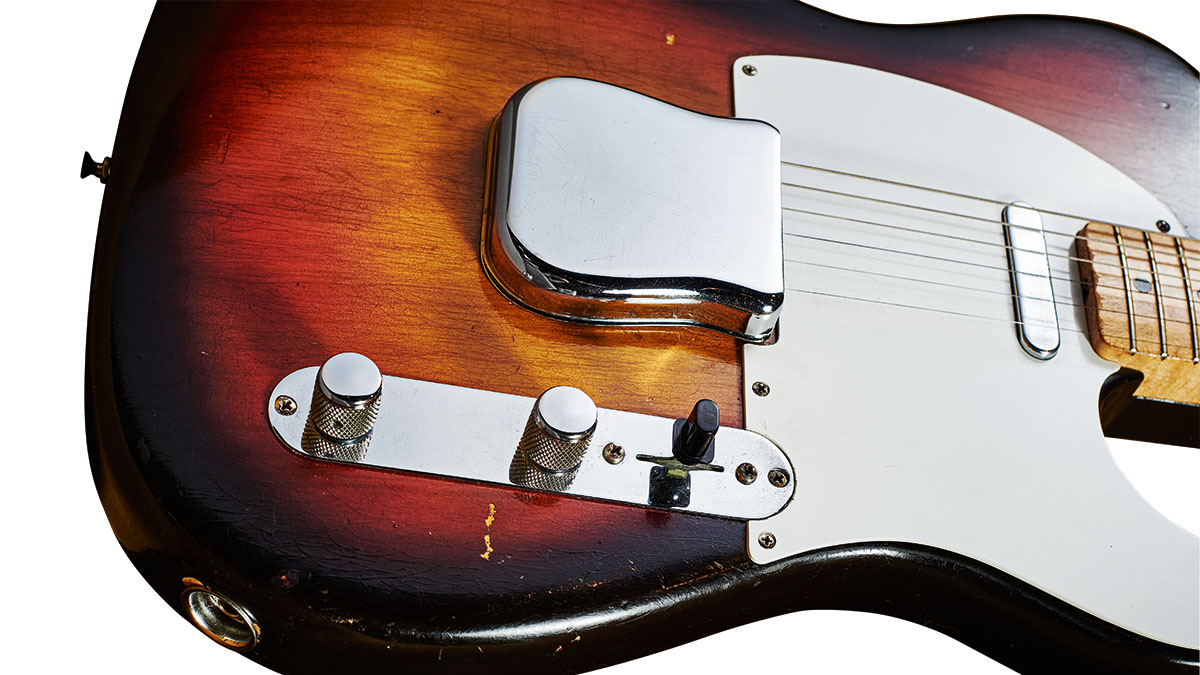
“I flew to Clinton, Iowa, and I went to her house and she was just a little frail old lady and she was sweet as pie… but I saw the case and I thought, ‘Holy moly’ because it looked brand-new. I opened it up and it was a brand-new left-handed ’58 Telecaster and she proceeds to tell me the whole story of her sister.
“But she doesn’t tell me anything about the contours on Bertha’s guitar – that was just left out or forgotten. So I said, ‘Where’s your sister’s guitar?’ And she said, ‘Well, my niece Anne has it now and she’s not selling. That’s the only thing that she’s got of her mother’s and it’s not for sale.’
She kinda wanted me out of there and I tried not to stay too long. And I left without the guitar – didn’t even try. I was afraid of her, honestly!
“I said, ‘Okay, but do you think that maybe I might be able to get a picture of the two guitars together, if I can’t get the guitar?’ She says, ‘Well, I’ll give her a call,’ and she goes to the phone hanging on the wall and calls her niece. I get on the phone and I said, ‘Where are you?’ and she said, ‘Outside of Boulder, Colorado.’ So now I’m thinking, ‘Okay, I can probably be there in the morning, find a flight somehow… probably have to jump on a couple of little planes to get there.’
“My American Express card was catching fire, you know? And reluctantly she says to me, ‘Okay, I’ll let you photograph the guitar,’ but she warned me, ‘Do not ask me to sell this guitar. It’s just not for sale.’ ‘No problem, I totally get it,’ I said.”
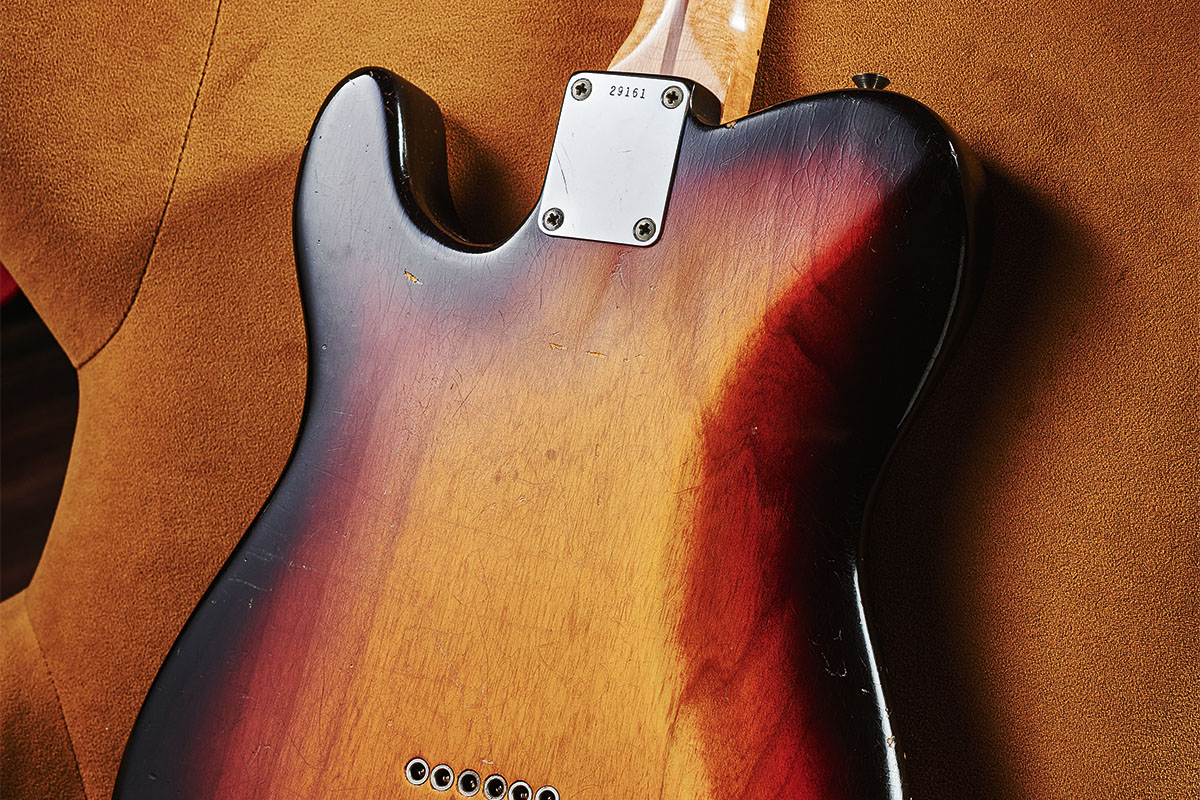
Unsure what reception he’d get but unable to resist the chance to see a totally unique factory Fender from the late 50s, David headed to Colorado.
“So I fly down there and when I get to the house, you could just tell she was like the ‘cat lady’ of the neighbourhood,” David recalls. “The house was just crammed with junk everywhere. But on the dining room table was this case. And I said, ‘Wow, is this it?’ And she says, ‘Yeah, this is it.’
“She opens it up and I look at it and I’m like, ‘What’s missing here?’ Because I only saw the arm-cut at first. So I said, ‘Is it okay if I touch it?’ She says ‘Yeah.’ I pick it up and I see the belly cut. And now I’m like, ‘What?’ And she’s like, ‘Yeah, I know, you’re looking at it because it’s different.’
“And I said, ‘Yes.’ I had taken the other guitar with me and so I put them both on the couch and I took some pictures. It was all very nice, but, you know, she was cranky the whole damn time. She kinda wanted me out of there and I tried not to stay too long. And I left without the guitar – didn’t even try. I was afraid of her, honestly!”
After the visit, David stayed in touch with Bertha Friedlich’s daughter, Anne. He didn’t think she’d ever part with the guitar, but he left the door ajar just the same.
“I sent her a Christmas card that year, but I didn’t hear anything,” David recalls. “The next year I’m at my desk and I’m going through things and it was right around the same time of year and I said, ‘You know, I’m gonna write this lady a Christmas card again.’ And I wrote the same thing as the year before: ‘Hope all is well, just thinking of you – don’t forget, if you change your mind, call me last…’
“This has always been my signature when trying to buy a guitar over a long period of time. Basically saying, get all your offers and ‘Call me last’. And I hear nothing. And I keep telling Richie [Friedman, David’s business partner at that time], ‘It’s never going to happen,’ because I showed him the pictures and he’s going, ‘Oh my God, how did you leave that guitar?’ But I’m like, ‘It was never going to happen – she would have beaten me with a broom.’
“So the next year comes, I send her another Christmas card. Sometime that following January, a little after Christmas, my cell phone goes and I see a ‘303’ area code. I thought, ‘303? Who do I know in Colorado…’ And then I knew and I felt it right here [touches his chest]. I answered the phone and said, ‘Hello, Anne.’
“She kind of giggles, which was the only laugh I ever got out of her, and she says, ‘Well, before you start talking, I want to understand something: you’re a guitar dealer, right?’ I said, ‘Yes.’ So she says, ‘Well, so if I was to sell you this guitar that belonged to my mother, you would have it, and you would sell it, and you would make some money, which is all fine. But the whole story of my mother and my aunt would just fade away forever.’ I said, ‘Well, unfortunately, probably.’
“She says, ‘That’s the tough part, for me. I see your Christmas cards every year and I get it. You want the guitar. But how do I deal with the fact that it’s really the only thing that I’ve got left of her, and that story is gonna go away?’
“Talking to her all of a sudden this lightbulb goes off in my head. I felt like a dope. I said, ‘Well, Anne, let me tell you something. I’m in the middle of building this museum in Tennessee with some friends. There’s not going to be another thing like it.
“What if I told you that I’d put your mom’s guitar and your aunt’s guitar side by side in a special room called The Vault and every single person who saw that guitar would hear that story from me – the story of your mother and your Aunt Esther, and their trip to Santa Ana. And the fact that the guitar didn’t fit her and they made it right for her.
“I will train every employee who’s there when I’m not there to tell that story, in the exact words. I’ll record it and they’ll read it word for word. What if I tell you that I will do that for you? Will you sell me the guitar?’ She said, ‘Go get a plane ticket.’
‘How much do you want for the guitar?’ I said. She said, ‘You’re gonna put it in a museum?’ I said, ‘Yeah.’ She said, ‘Take the guitar.’ She wouldn’t take a penny
“So I got on a plane. I was delayed for hours because it was January and it was snowing, but I flew out to Boulder, Colorado, and I went to her house. She asked me to tell her the story about the museum again. I had a knapsack full of cash with me – I was prepared to spend a lot of money – so she says, ‘Well, now we’ve got to get down to brass tacks.’
“Because I could see she needed the money. ‘How much do you want for the guitar?’ I said. She said, ‘You’re gonna put it in a museum?’ I said, ‘Yeah.’ She said, ‘Take the guitar.’ She wouldn’t take a penny. Which broke me down. Still does. And I did what I said I was gonna do.”
So the guitars, and the story of the sisters who played them and their eventful visit to Fender in 1958, were given pride of place at the Songbirds Museum, where we saw them when Guitarist visited back in 2018.
Sadly, a slump in visitors during the pandemic forced the museum to make difficult decisions about its future and Songbirds subsequently refocused on general music history, with fewer guitars on show, and in due course the Teles returned to David along with others he had provided for display.
“I called Anne because I wanted to give the guitar back,” David recalls, in postscript. “But the number was disconnected. I figured she’d lost the house, but I did some digging and found that she’d passed away.”
And there the story ended. Though perhaps not quite – because now it has been told in the pages of Guitarist, too.
“I figure that at some point when I sell it I’ll put the money where it belongs,” David reflects. “Maybe an Arts association or something. I don’t really know; I don’t really have a concrete plan, but I don’t know if I could really profit off it,” he concludes.
1964 ‘Sparkle’ Telecaster
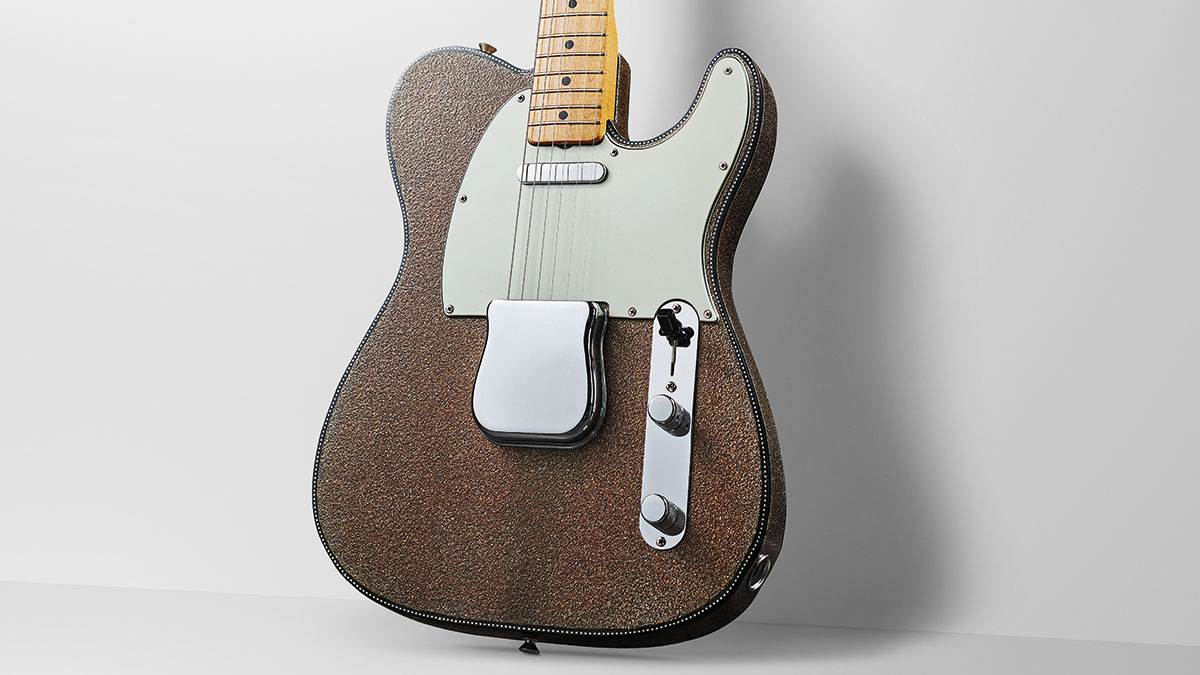
Sometimes, even guitars we’ve never touched can still play a significant role in our lives. This is the story of the next Telecaster we examine, a 1964 model clad in an unusually rough-textured silver-sparkle finish on both body and headstock, now yellowed with age. The guitar was one of three made in honour of country music and TV star Buck Owens and his band The Buckaroos.
Three instruments were made in this crushed-glass, silver-sparkle finish with matching headstock. There’s a load of YouTube videos showing Don Rich playing his
One was presented to Buck, the second to his guitarist Don Rich, who died tragically young in 1974, while a third was presented to Fender’s George Fullerton. While this particular Tele is not the one presented to Buck himself, nor that used by Don Rich, it powerfully evokes their memory. For Nashville legend and Tele aficionado Vince Gill, that connection was profoundly moving, David explains.
“Three instruments were made in this crushed-glass, silver-sparkle finish with matching headstock,” David Davidson says. “There’s a load of YouTube videos showing Don Rich playing his – and from what I can see it looks exactly like this one here. The Buck Owens one is owned by Buck’s family.
“The Don Rich one had a replaced neck at some point and I believe that it’s now in the Musicians Hall Of Fame in Nashville. So this guitar is most likely the George Fullerton one, although it was sold to me years ago under the guise that it was the Don Rich one – it doesn’t matter, it’s one of the three.

“Fender never attempted to do a crushed glass finish again,” David says of the rough-textured sparkle, which has an almost sandpaper-like feel. “This is not a Dennis Swiden-style sparkle finish,” he adds, referring to the celebrated custom-finish artist who worked with Fender in the ’60s.
“This is something completely different. The method of manufacture and how they actually did it has never really been publicised in any way. To me, it looks like some kind of crushed-glass finish, tumbled to remove sharp edges and mixed with some type of epoxy resin that coats the guitar.
“There’s a clear-coat painted over it that is nitrocellulose, which has turned yellow with age and makes the guitar look gold. They were also reportedly the first maple-cap guitars that Fender ever made so [a build date of around] ’63 or ’64 makes sense,” David reflects.
The reason this guitar had such an emotional impact on Vince Gill had, once again, to do with family roots and the power of nostalgia for music, people and places of the past.
“When I brought that guitar to Vince Gill’s house, Vince told me a story that when he was a little boy and his whole family were musicians, his dad was [performing at] a high school reunion and they were all gonna do this Hee Haw skit [based on the popular American TV variety show that Buck Owens appeared in].
“And they were going to be Buck Owens and Don Rich and everything else. Vince said ‘Oh, I can be in it, can I be in it, daddy?’ And he told him yes. He said, ‘What do you want to do?’ And he said, ‘Well, I want to play Chaparral. I want to be a Buckaroo, I want to be Don Rich.’
Vince Gill was so touched to have a chance to handle that guitar, even knowing that it might not be the one used by his childhood hero. To him, it was close enough
“He said that guitar was one of the most moving, inspirational guitars in the world to him – it made him wanna play. He got the chance to play this guitar at his house when I brought it to him, though I told him at the time, ‘I don’t really know if this was specifically Don’s guitar or not because there’s a lot of speculation about it to this day.’
“But Vince is an unbelievable person. He’s the salt of the Earth, the nicest human being. He’s just such a regular guy. He was so touched to have a chance to handle that guitar, even knowing that it might not be the one used by his childhood hero. To him, it was close enough. He says he held that guitar and he felt like he was there.”
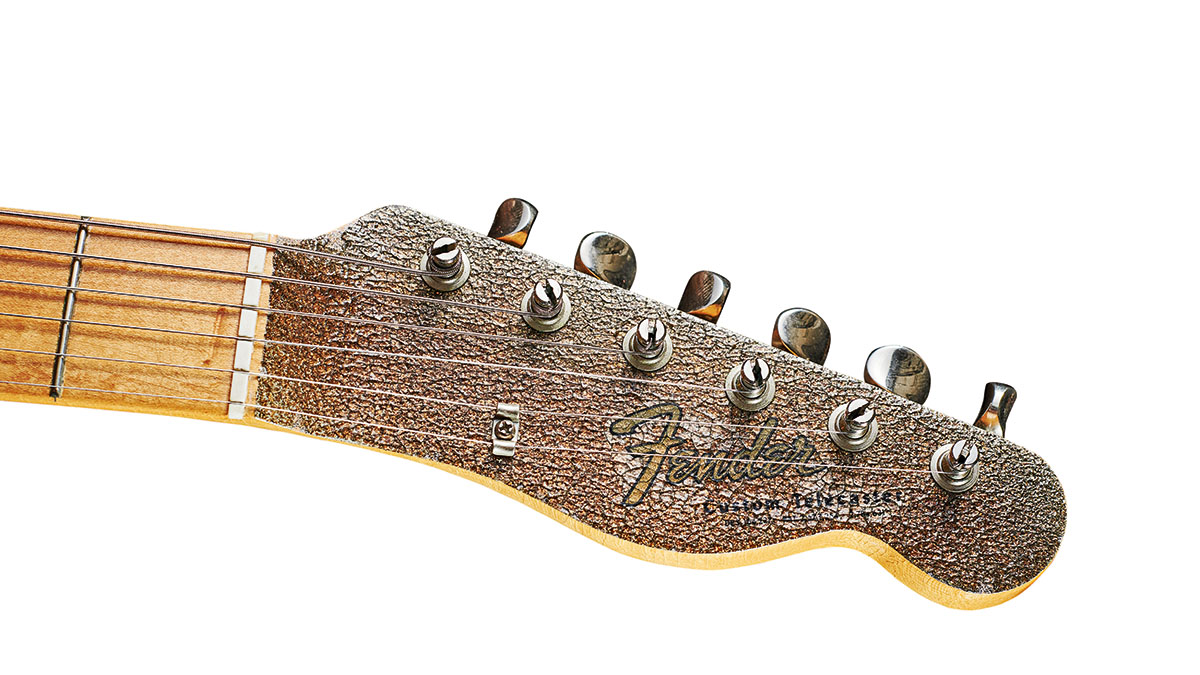
1971 Thinline Telecaster
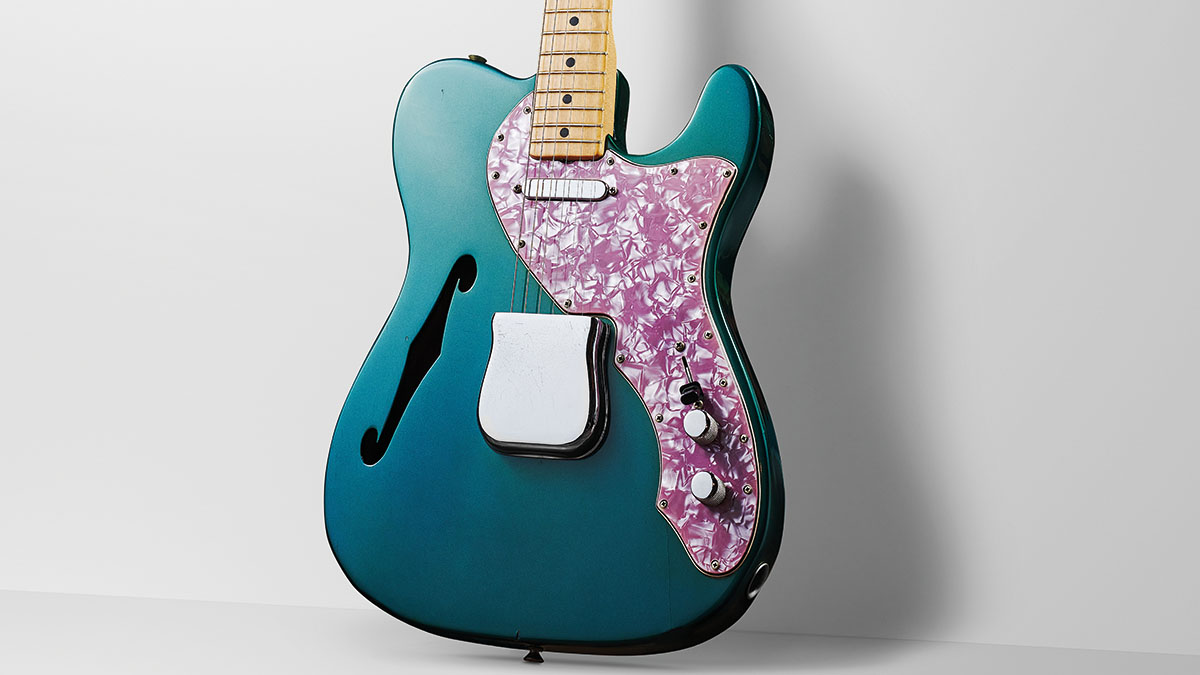
One of the more vivid splashes of colour on the walls of Well Strung Guitars is this guitar, a rare 1971 Thinline Tele in special livery designed for display at the NAMM Show. It belonged to a small run of special Thinlines produced for promotional purposes in a spectrum of bold, optimistic colours.
Some of the hues these Thinlines were painted in were named and documented on an accompanying colour chart in Freddie Tavares’ own hand. But this one was not listed, making it rarer still.
“We call that guitar’s colour ‘Ocean Turquoise’ [as a deliberate approximation] because we don’t know what to call it. I’ve got several ‘Ocean Turquoise’ guitars here, but this is a richer, darker, meatier colour than those. And it’s not on this chart. But I think that’s part of the story: there’s this turquoise or teal colour that I think is just an undocumented colour.”
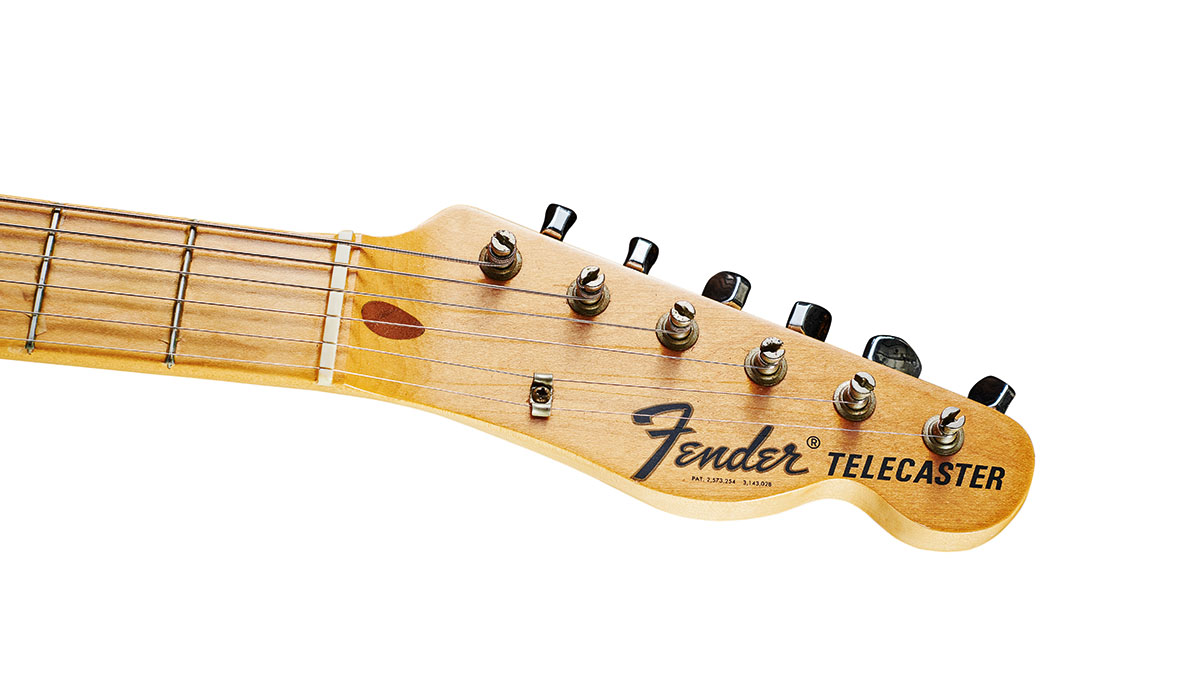
Not only is the rich metallic turquoise of the finish striking but also the guitar’s pearloid scratchplate, which is a vibrant pinkish-purple colour.
“The tint was put in [to the plastic] in the molten state. All of those Fender pickguards and Gibson pickguards… the material came in a giant roll, which was heated and flattened,” David says. “That’s why if you ever look at Fender pickguards, what are they always doing? Curling. Because they want to go back [to their original rolled form].
The scariest thing about owning those guitars is when you take the pickguard off to examine the electronics, getting them back on is not easy because they immediately start curling up
David Davidson
“There’s one thing you notice about Thinline Telecasters: they started in 1968 with an 11-hole pickguard. But by 1971, some of them have 15 holes or even 17 holes because this pickguard was constantly going [makes shrivelling noise]. So they’re just literally taking the screws and driving them in wherever something’s not laying flat or it’s lifting. If you look at those guitars you’ll see different hole patterns on most of them. People used to think when we were young, ‘Oh, somebody just added holes.’ But that’s not the case,” David says.
“The scariest thing about owning those guitars is when you take the pickguard off to examine the electronics, getting them back on is not easy because they immediately start curling up,” he continues.
“Very scary. It’s a nightmare… but that colour, it’s right as rain, it’s real, it’s unquestionably Fender urethane. So that’s a 70s finish of a colour that really doesn’t exist on anything else. The closest colour that I’ve ever seen is a Pontiac colour called Mariner Turquoise from 1967. That’s as close as I can get,” David adds with a smile and a shrug.
Jamie Dickson is Editor-in-Chief of Guitarist magazine, Britain's best-selling and longest-running monthly for guitar players. He started his career at the Daily Telegraph in London, where his first assignment was interviewing blue-eyed soul legend Robert Palmer, going on to become a full-time author on music, writing for benchmark references such as 1001 Albums You Must Hear Before You Die and Dorling Kindersley's How To Play Guitar Step By Step. He joined Guitarist in 2011 and since then it has been his privilege to interview everyone from B.B. King to St. Vincent for Guitarist's readers, while sharing insights into scores of historic guitars, from Rory Gallagher's '61 Strat to the first Martin D-28 ever made.

